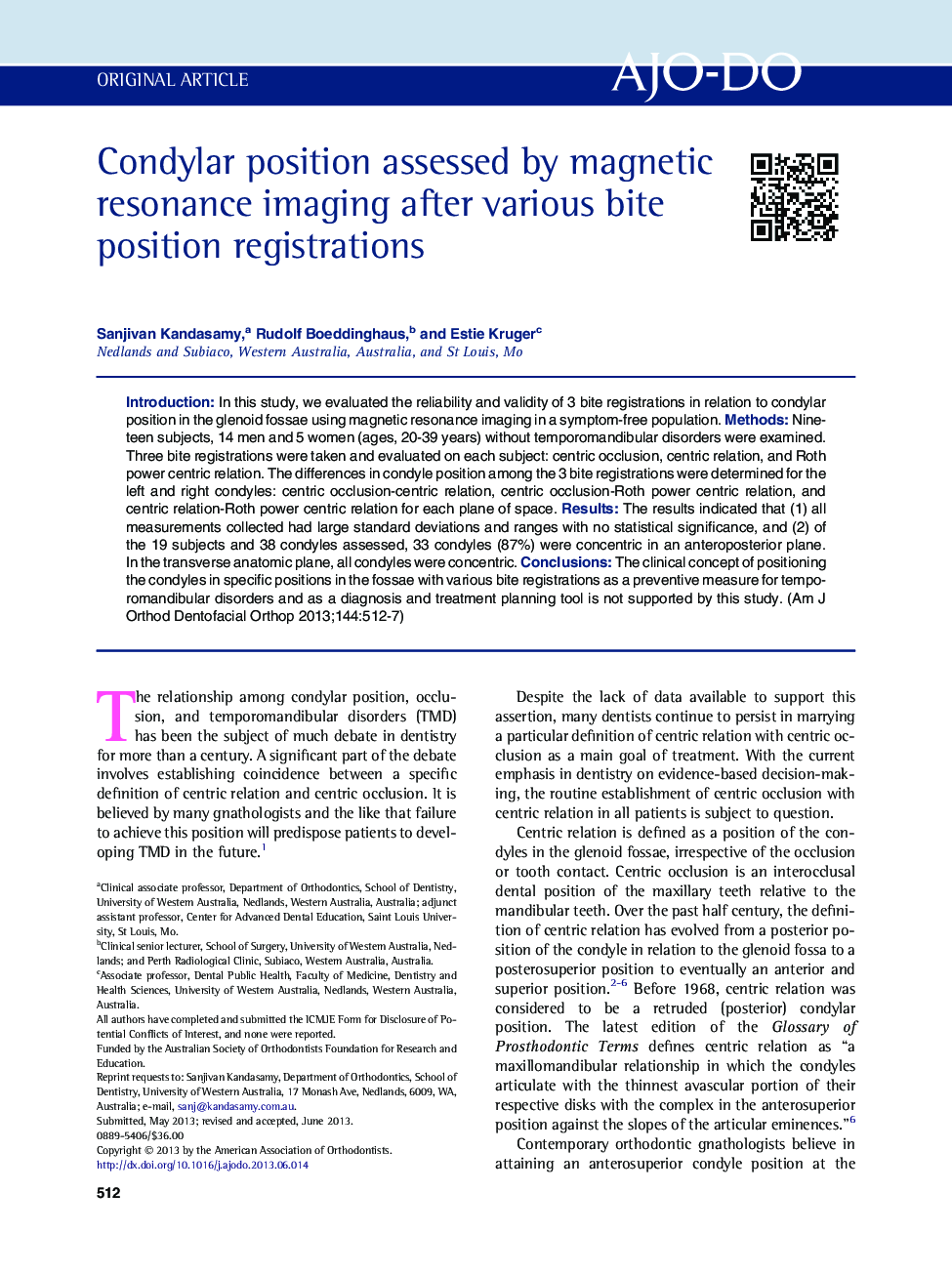| Article ID | Journal | Published Year | Pages | File Type |
|---|---|---|---|---|
| 3116906 | American Journal of Orthodontics and Dentofacial Orthopedics | 2013 | 6 Pages |
IntroductionIn this study, we evaluated the reliability and validity of 3 bite registrations in relation to condylar position in the glenoid fossae using magnetic resonance imaging in a symptom-free population.MethodsNineteen subjects, 14 men and 5 women (ages, 20-39 years) without temporomandibular disorders were examined. Three bite registrations were taken and evaluated on each subject: centric occlusion, centric relation, and Roth power centric relation. The differences in condyle position among the 3 bite registrations were determined for the left and right condyles: centric occlusion-centric relation, centric occlusion-Roth power centric relation, and centric relation-Roth power centric relation for each plane of space.ResultsThe results indicated that (1) all measurements collected had large standard deviations and ranges with no statistical significance, and (2) of the 19 subjects and 38 condyles assessed, 33 condyles (87%) were concentric in an anteroposterior plane. In the transverse anatomic plane, all condyles were concentric.ConclusionsThe clinical concept of positioning the condyles in specific positions in the fossae with various bite registrations as a preventive measure for temporomandibular disorders and as a diagnosis and treatment planning tool is not supported by this study.
